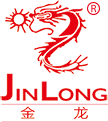The first drinking water of newborn chicks is called “boiling water”, and the chicks can be “boiling water” after they are housed. Under normal circumstances, water should not be cut off after boiling water. The drinking water needed by chicks should be close to body temperature, and cold water should not be drunk, so as to avoid cold water shock and sudden drop in body temperature and disease, let alone cut off water to prevent chicks from being blocked from development or dying from dehydration. Quality should be controlled.
The first feeding of the chicks is called the “starter”. After the chicks are put into the house, they should drink water and then feed, which is beneficial to promote intestinal peristalsis, absorb residual yolk, discharge meconium, and increase appetite. It is best for chicks to drink water within 24 hours after hatching. For chicks that have been transported over long distances, the initial drinking time should not exceed 36 hours.
It has been reported that the time interval from hatching to feeding is a key stage affecting the development of newborn chicks. Traditionally, chicken farmers have always artificially delayed the feeding time, thinking that the yolk remaining in the chick can be the best source of nutrients for the newborn chicks. Although residual yolk can maintain chick survival for the first few days after hatching, it cannot meet chick body weight gain and optimal development of the gastrointestinal, cardiorespiratory or immune systems. In addition, the macromolecules in the residual yolk include immunoglobulins, and the use of these maternal antibodies as amino acids also deprives the newborn chicks of the opportunity to acquire passive disease resistance. Therefore, the late feeding chicks have poor resistance to various diseases, and affect the growth and survival rate. The feeding time of the chicks should not exceed 24 hours at the latest after hatching. Never artificially delay the feeding time. Try to start feeding within 3 hours after the first drink.
The feeding of newborn chicks requires drinking water first and then eating.
1. Drinking water first is the physiological need of hatching chicks
After hatching, there is still some yolk left in the yolk sac of the chicks that has not been absorbed. The nutrients in the yolk are the necessary nutrients for the chicks to lay eggs. The speed of nutrient absorption from the yolk mainly depends on whether there is sufficient drinking water. Therefore, it is a physiological need to drink water for newly hatched chicks, which can effectively speed up the absorption and utilization of yolk nutrients. The earlier the water is drank, the better the utilization effect. Giving the chicks to drink water first is more conducive to cleaning the intestines, expelling the meconium, promoting the metabolism of the chicks, accelerating the transformation and absorption of the yolk in the abdomen, and is more conducive to the growth and development of the chicks. Otherwise, there is yolk in the stomach of the chicks that has not been absorbed, and feeding them in a hurry will increase the digestive burden on the stomach and intestines, which is not good for the chickens.
2. The digestive function of young chicks is weak
The digestive tract of young chicks is short, weak in digestion, and dysfunctional. It is not easy to digest animal nutrition (yolk), and the utilization rate is low. It takes 3-5 days for the egg yolk remaining in the abdomen to be fully digested and absorbed. Therefore, after hatching Young chicks should not be fed too early, even if they start to eat, they should not be fed too much. Because chicks are greedy and do not know whether they are hungry or full, the solution is to time, qualitative and quantitative, so as not to cause digestive disorders.
Chicks that have just entered the house need to be hydrated in time, and drinking water is crucial for chicks. Traditional vacuum drinkers are prone to spillage, pollute the environment, and cause cross-infection of chickens. If the vacuum drinking fountain is overturned, it will also cause water shortage, which requires the breeder to observe frequently, add water in time, and increase the labor intensity of the breeder. The nipple drinker needs a certain period of adaptation for chicks, and the automatic drinking bowl for chicks solves the above problems very well.
Post time: Oct-18-2022

